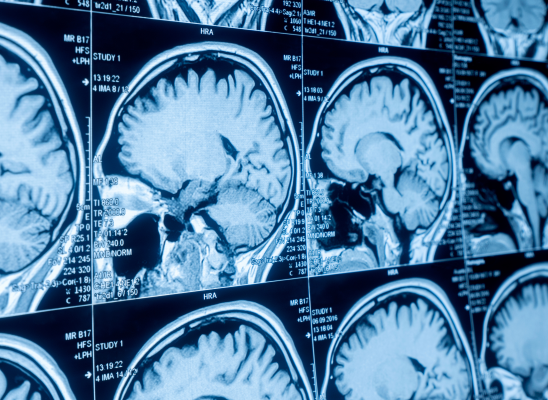
Online test
Find out the severity of your symptoms with this free online test
Managing Borderline Personality Disorder (BPD) can be challenging on its own, but when Obsessive-Compulsive Disorder (OCD) is also in the picture, daily life can feel even more overwhelming. The intense emotions, fear of abandonment, and impulsive behaviors common in BPD can interact with the intrusive thoughts and compulsive rituals of OCD, creating a complex mix of challenges. Understanding how these two conditions overlap, and learning strategies to address both, can make a meaningful difference in treatment outcomes and overall quality of life.
What Exactly Is BPD?
Borderline Personality Disorder is a real, recognized mental health condition—not simply a term to describe someone as “emotional” or “difficult.” BPD involves intense emotional instability, an unclear or shifting sense of self, and patterns of unstable relationships. People with BPD often fear abandonment, even when there’s little reason to believe someone will leave. Moods can shift rapidly, and relationships often feel like an emotional roller coaster.
In daily life, this might look like reacting strongly to small signs of rejection, feeling confident one moment and empty the next, or struggling to maintain a stable identity. Impulsive behaviors such as overspending, binge eating, or self-harm can arise as attempts to cope with overwhelming emotions (Chapman et al., 2024). Because these symptoms affect so many aspects of life, understanding the condition and seeking proper treatment is essential.
When OCD Joins the Picture
Obsessive-Compulsive Disorder is more than a preference for cleanliness or order. This mental health disorder is characterized by intrusive, unwanted thoughts (obsessions) and repetitive behaviors or mental rituals (compulsions) meant to reduce anxiety. Common obsessions include fears of contamination, harming others, or making mistakes, while compulsions might involve excessive washing, checking, counting, or repeating phrases.
Although these rituals can temporarily relieve anxiety, the relief is short-lived, and the obsessions return stronger than before. People with OCD often recognize that their behaviors are irrational but feel powerless to stop them. The constant mental and physical effort of managing obsessions and compulsions can be exhausting and interfere with work, school, and relationships.
The Intersection of BPD and OCD
Living with both BPD and OCD can feel like being caught in a constant internal storm. Research indicates that around 9% of people with OCD will also have BPD (Sharma, E. et al., 2021). The emotional volatility of BPD—fear of abandonment, intense mood swings, and shifting self-image—can amplify the anxiety and tension caused by OCD’s intrusive thoughts. Meanwhile, the compulsive rituals of OCD can add structure but also increase emotional distress, creating a difficult cycle.
For someone with both disorders, even minor conflicts or signs of rejection can trigger strong emotional reactions that fuel obsessive thinking and compulsive behavior. This can make everyday tasks feel overwhelming. Over time, emotional instability feeds obsessive thinking, and obsessive rituals feed emotional turmoil, creating an exhausting loop.
The effects reach far beyond mental health—impacting relationships, work, and overall functioning (Melca et al., 2015). Without a clear diagnosis that accounts for both conditions, progress can feel frustratingly slow. Recognizing the overlap and using an integrated treatment plan that addresses emotional regulation and compulsive behavior is key to achieving stability and recovery.
Are OCD and BPD Essentially the Same Thing?
At first glance, Obsessive-Compulsive Disorder (OCD) and Borderline Personality Disorder (BPD) can look strikingly similar. Both can involve high anxiety, perfectionism, self-doubt, and a constant need for reassurance. People struggling with either condition might appear “stuck” in their thoughts or behaviors, often feeling trapped in cycles they don’t fully understand. But beneath those surface similarities, these are two very different experiences—driven by different emotional engines.
In OCD, anxiety stems from intrusive thoughts that are unwanted, distressing, and lead a person to want to do whatever it takes to neutralize them. The compulsions that follow, whether that’s checking, cleaning, counting, or seeking reassurance, are attempts to regain a sense of control or safety. The fear is often about preventing harm or moral failure, even if the person logically knows their thoughts don’t make sense. It’s an exhausting tug-of-war between what feels real and what reason tells them isn’t.
BPD, on the other hand, is rooted in emotional instability and a fragile sense of self. Someone with BPD might experience sudden shifts in mood, identity, or relationships. Intense emotions such as anger, fear, shame, or abandonment can feel overwhelming, leading to impulsive reactions or desperate efforts to avoid rejection. While OCD tends to be about control, BPD often feels like the opposite: emotions taking over before the person has a chance to catch their breath.
That said, overlap does happen. The emotional intensity of BPD can amplify OCD symptoms, making intrusive thoughts feel even more distressing. Likewise, the rigid routines and rituals of OCD can feed into BPD’s cycles of shame and self-criticism. This can create a confusing loop where someone may feel they’re failing at both managing their anxiety and keeping their emotions in check.
Still, it’s important to remember that OCD and BPD are not two sides of the same coin. Each disorder requires its own approach, both in therapy and in self-understanding. Recognizing where one ends and the other begins can make all the difference in treatment. When clinicians accurately identify both, people can receive care that targets the specific challenges they face and help lead them to learning to manage intrusive thoughts through structured exposure work while also building emotional regulation and self-compassion skills.
Why Accurate Diagnosis Matters – and What Best Practice Looks Like
Accurate diagnosis isn’t just about labeling. Being accurately diagnosed helps to ensure that treatment addresses all aspects of a person’s symptoms. If someone has both OCD and BPD, but treatment focuses on only one condition, progress may stall.
For OCD, one of the most effective and well-researched treatments is Exposure and Response Prevention (ERP), a specialized form of Cognitive Behavioral Therapy (CBT). ERP helps individuals confront the thoughts, images, or situations that trigger their obsessions—known as exposures—while refraining from the compulsive behaviors that usually follow. Over time, this process retrains the brain to tolerate uncertainty and reduces the anxiety linked to obsessive thoughts (Ferrando & Selai, 2021). Rather than trying to “get rid of” intrusive thoughts, ERP teaches people to experience them without reacting, allowing anxiety to decrease naturally.
For Borderline Personality Disorder (BPD), evidence-based treatments focus on building emotional stability, improving relationships, and strengthening a sense of self. Dialectical Behavior Therapy (DBT), developed by psychologist Marsha Linehan, is one of the most well-validated approaches. It combines cognitive-behavioral strategies with mindfulness, helping people learn skills in emotion regulation, distress tolerance, interpersonal effectiveness, and mindfulness practice. DBT emphasizes acceptance and change by teaching individuals to accept their emotions as valid while also learning practical tools to manage them more effectively.
Other effective therapies for BPD include standard Cognitive Behavioral Therapy (CBT), which targets unhelpful thought patterns and behaviors, and Mentalization-Based Therapy (MBT), which focuses on improving the ability to understand one’s own and others’ thoughts and feelings (Crotty et al., 2024). MBT helps individuals strengthen their sense of self and reduce misunderstandings in relationships. Both of which are core challenges in BPD.
When both OCD and BPD are present, combining these approaches can be particularly powerful. ERP can address obsessive and compulsive patterns, while DBT or MBT can support emotional regulation, impulse control, and relationship stability. Integrated treatment helps ensure that a person isn’t just learning to resist rituals but also learning how to manage the intense emotions that often drive them.
When both disorders are present, a coordinated treatment plan is ideal—one that integrates emotion regulation skills, exposure-based techniques, and collaboration among providers.
Helpful Questions to Ask Your Therapist
- Does my treatment plan address both compulsive behaviors and emotional regulation?
- How will therapy help me manage intense emotions, relationship struggles, and identity instability?
- What’s the plan for continuity and relapse prevention if multiple providers are involved?
- How are therapy and medication being coordinated to support both conditions?
Final Thoughts
Living with either OCD or BPD is hard. Living with both can feel overwhelming. But here’s an important thing to remember: You’re not stuck, and you’re not alone. Recognising that you might have both—or that your distress may reflect overlapping conditions—is a brave step. It opens the door to clearer diagnosis and more tailored treatment.
If you’re interested in a resource that specialises in OCD (and its related conditions) and you’d like to explore tailored support options, please visit the contact page at StopOCD.com. Taking that first step may feel difficult, but it could be the turning point toward greater stability, clarity and hope.
References
- Chapman, J., Jamil, R. T., Fleisher, C., & Torrico, T. J. (2024). Borderline personality disorder. In StatPearls. StatPearls Publishing. https://www.ncbi.nlm.nih.gov/books/NBK430883/
- Sharma, E., Sharma, L. P., Balachander, S., Lin, B., Manohar, H., Khanna, P., Lu, C., Garg, K., Thomas, T. L., Au, A. C. L., Selles, R. R., Højgaard, D. R. M. A., Skarphedinsson, G., & Stewart, S. E. (2021). Comorbidities in Obsessive-Compulsive Disorder Across the Lifespan: A Systematic Review and Meta-Analysis. Frontiers in Psychiatry, 12, 703701. https://doi.org/10.3389/fpsyt.2021.703701
- Melca, I. A., Yücel, M., Mendlowicz, M. V., de Oliveira-Souza, R., & Fontenelle, L. F. (2015). The correlates of obsessive–compulsive, schizotypal, and borderline personality disorders in obsessive–compulsive disorder. Journal of Anxiety Disorders, 33, 15–24. https://doi.org/10.1016/j.janxdis.2015.04.004
- Ferrando, L., & Selai, C. (2021). A systematic review and meta-analysis on the effectiveness of exposure and response prevention therapy in the treatment of obsessive-compulsive disorder. Journal of Obsessive-Compulsive and Related Disorders, 31, 100684. https://doi.org/10.1016/j.jocrd.2021.100684
- Crotty, K., Viswanathan, M., Kennedy, S., Edlund, M. J., Ali, R., Siddiqui, M., Wines, R., Ratajczak, P., & Gartlehner, G. (2024). Psychotherapies for the treatment of borderline personality disorder: A systematic review.Journal of Consulting and Clinical Psychology, 92(5), 275–295. https://doi.org/10.1037/ccp0000833
Online test
Find out the severity of your symptoms with this free online test
Start your journey with StopOCD
Take control of your life and find freedom from OCD through professional therapy and evidence-based cognitive behavioral techniques.
Start Now



